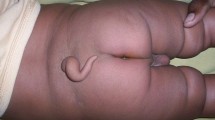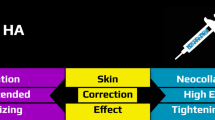Abstract
Otoconia are assumed to be involved in inner ear disorders such as benign paroxysmal positional vertigo (BPPV). Up to now, the distinct structure and morphology of intact and degenerate human utricular otoconia has been only poorly investigated on vital specimen. In this study, human otoconia were obtained from the utricle in five patients undergoing translabyrinthine vestibular schwannoma surgery. Specimens were examined by environmental scanning electron microscopy. Intact and degenerate otoconia as well as fracture particles of otoconia and bone were analyzed by energy dispersive X-ray microanalysis (EDX) and powder X-ray diffraction (XRD). Intact otoconia reveal a uniform size showing characteristic symmetry properties. Degenerative changes can be observed at several stages with gradual minor and major changes in their morphology including fragment formation. EDX analyses reveal the characteristic chemical composition also for otoconia remnants. XRD shows that intact and degenerate otoconia as well as remnants consist of the calcite modification. In conclusion, electron microscopy serves as a standard method for morphological investigations of otoconia. Human utricular otoconia show a uniform outer morphology corresponding to a calcite-based nanocomposite. Morphological changes provide further evidence for degeneration of utricular otoconia in humans, which might be a preconditioning factor causing BPPV. In case of uncertain origin, particles can be clearly assigned to otoconial origin using EDX and XRD analyses.



Similar content being viewed by others
References
Walther LE, Blödow A, Bloching MB, Buder J, Carillo-Cabrera W, Roseeva E, Borrmann H, Simon P, Kniep R (2013) The inner structure of human otoconia. Otol Neurotol (in press)
Simon P, Carrillo-Cabrera W, Huang YX, Buder J, Borrmann H, Cardoso-Gil R, Rosseeva E, Yarin Y, Zahnert T, Kniep R (2001) Structural relationship between calcite–gelatine composites and biogenic (human) otoconia. Eur J Inorg Chem 35:5370–5377
Ross MD, Peacor D, Johnsson LG, Allard LF (1976) Observations on normal and degenerating human otoconia. Ann Otol Rhinol Laryngol 85(3 pt 1):310–326
Lim DJ (1984) Otoconia in health and disease. A review. Ann Otol Rhinol Laryngol Suppl 112:17–24
Campos A, Cañizares FJ, Sánchez-Quevedo MC et al (1990) Otoconial degeneration in the aged utricle and saccule. Adv Otorhinolaryngol 45:143–153
Jang YS, Hwang CH, Shin JY et al (2006) Age-related changes on the morphology of the otoconia. Laryngoscope 2006(116):996–1001
Walther LE, Westhofen M (2007) Presbyvertigo-aging of otoconia and vestibular sensory cells. J Vestib Res 17:89–92
Schuknecht HF, Ruby RR (1973) Cupulolithiasis. Adv Otorhinolaryngol 20:434–443
Parnes LS, McClure JA (1990) Posterior semicircular canal occlusion for intractable benign paroxysmal positional vertigo. Ann Otol Rhinol Laryngol 99:330–334
Kveton JF, Kashgarian M (1994) Particulate matter within the membranous labyrinth: pathologic or normal? Am J Otol 115:173–176
Welling DB, Parnes LS, O’Brien B, Bakaletz LO, Brackmann DE, Hinojosa R (1997) Particulate matter in the posterior semicircular canal. Laryngoscope 107:90–94
Inagaki T, Suzuki M, Otsuka K, Kitajima N, Furuya M, Ogawa Y, Takenouchi T (2006) Model experiments of BPPV using isolated utricle and posterior semicircular canal. Auris Nasus Larynx 33(2):129–134
Otsuka K, Suzuki M, Shimizu S, Konomi U, Inagaki T, Iimura Y, Hayashi M, Ogawa Y (2010) Model experiments of otoconia stability after canalith repositioning procedure of BPPV. Acta Otolaryngol 130:804–809
Valli P, Botta L, Zucca G, Valli S, Buizza A (2008) Simulation of cupulolithiasis and canalolithiasis by an animal model. J Vestib Res 18(2–3):89–96
Obrist D, Hegemann S, Kronenberg D, Häuselmann O, Rösgen T (2010) In vitro model of a semicircular canal: design and validation of the model and its use for the study of canalithiasis. J Biomech 19(6):1208–1214. doi:10.1016/j.jbiomech.2009.11.027
Hall SF, Ruby RR, McClure JA (1979) The mechanics of benign paroxysmal vertigo. J Otolaryngol 8(2):151–158
Brandt T, Daroff RB (1980) Physical therapy for benign paroxysmal positional vertigo. Arch Otolaryngol 106(8):484–485
Brandt T, Steddin S (1993) Current view of the mechanism of benign paroxysmal positioning vertigo: cupulolithiasis or canalolithiasis? J Vestib Res 3(4):373–382
Carlström D, Engström H (1955) The ultrastructure of statoconia. Acta Otolaryngol 45:14–18
Igarashi M, Saito R, Mizukoshi K, Alford BR (1993) Otoconia in young and elderly persons: a temporal bone study. Acta Otolaryngol Suppl 504:26–29
Harada Y, Graham MD, Pulec JL, House WF (1978) Human otoconia in surgical specimens. Arch Otolaryngol 104:371–375
Bachor E, Wright CG, Karmody CS (2002) The incidence and distribution of cupular deposits in the pediatric vestibular labyrinth. Laryngoscope 112(1):147–151
von Brevern M, Radtke A, Lezius F, Feldmann M, Ziese T, Lempert T, Neuhauser H (2007) Epidemiology of benign paroxysmal positional vertigo: a population based study. J Neurol Neurosurg Psychiatry 78(7):710–715
Agrawal Y, Zuniga MG, Davalos-Bichara M, Schubert MC, Walston JD, Hughes J, Carey JP (2012) Decline in semicircular canal and otolith function with age. Otol Neurotol 33:832–839
Nakahara H, Yoshimura E, Tsuda Y, Murofushi T (2013) Damaged utricular function clarified by oVEMP in patients with benign paroxysmal positional vertigo. Acta Otolaryngol 133:144–149
Seo T, Saka N, Ohta S, Sakagami M (2013) Detection of utricular dysfunction using ocular vestibular evoked myogenic potential in patients with benign paroxysmal positional vertigo. Neurosci Lett 550:12–16. doi:10.1016/j.neulet.2013.06.041
Lee JD, Park MK, Lee BD, Lee TK, Sung KB, Park JY (2013) Abnormality of cervical vestibular-evoked myogenic potentials and ocular vestibular-evoked myogenic potentials in patients with recurrent benign paroxysmal positional vertigo. Acta Otolaryngol 133(2):150–153. doi:10.3109/00016489.2012.723823
Walther LE, Wenzel A, Buder J, Blödow A, Kniep R (2013) Gentamicin-induced structural damage of human and artificial (biomimetic) otoconia. Acta Otolaryngol (in press)
Kusunoki T, Cureoglu S, Schachern PA, Oktay MF, Fukushima H, Paparella MM (2005) Cupular deposits and aminoglycoside administration in human temporal bones. J Laryngol Otol 119(2):87–91
Tachibana M, Morioka H (1992) Glucuronic acid-containing glycosaminoglycans occur in otoconia: cytochemical evidence by hyaluronidase-gold labeling. Hear Res 62(1):11–15
Andrade LR, Lins U, Farina M, Kachar B, Thalmann R (2012) Immunogold TEM of otoconin 90 and otolin: relevance to mineralization of otoconia, and pathogenesis of benign positional vertigo. Hear Res 292:14–25
Conflict of interest
The authors report no conflict of interest, financial or otherwise.
Author information
Authors and Affiliations
Corresponding author
Rights and permissions
About this article
Cite this article
Walther, L.E., Wenzel, A., Buder, J. et al. Detection of human utricular otoconia degeneration in vital specimen and implications for benign paroxysmal positional vertigo. Eur Arch Otorhinolaryngol 271, 3133–3138 (2014). https://doi.org/10.1007/s00405-013-2784-6
Received:
Accepted:
Published:
Issue Date:
DOI: https://doi.org/10.1007/s00405-013-2784-6




